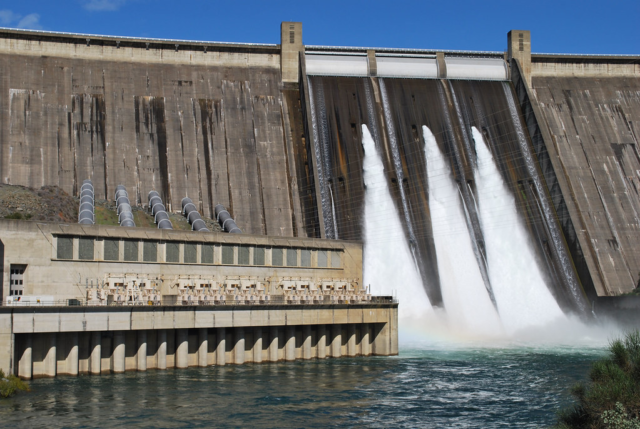California: The U.S. Army Corps of Engineers released 2.2 billion gallons of water from two California dams over the weekend. This action followed an order from President Donald Trump, who claimed the water would benefit farmers and fire-affected areas in Southern California. However, experts say the move was misguided and wasteful.
Trump Celebrates Water Release
Trump took to Truth Social on Friday and Sunday to celebrate the release. “The water is flowing in California,” he wrote, adding that it was heading to “farmers throughout the State, and to Los Angeles.”
Water experts, however, argue that this claim is inaccurate. The water released from the dams will not reach Los Angeles and could lead to shortages in the summer months.
Experts Warn of Water Waste
Heather Cooley, director of research at the Pacific Institute, criticized the decision. “They were holding extra water in those reservoirs to prepare for a dry summer,” she explained. “Releasing it now puts agriculture at risk.”
On Friday, Trump stated that 1.6 billion gallons of water had been released. By Sunday, the total reached 2.2 billion gallons. He predicted that within three days, the amount would rise to 5.2 billion gallons.
Where Did the Water Go?
According to local water districts, the released water flowed into the dry lakebed of Tulare Lake. A letter from Senator Alex Padilla to Defense Secretary Pete Hegseth confirmed this, stating that downstream entities used some of the water for irrigation and groundwater recharge. However, experts say much of it was wasted.
Cooley expressed concern about the move. “This release provides no real benefits and could leave California farmers struggling for water later this year,” she said.
Lack of Coordination Between State and Federal Officials
California’s Department of Water Resources director, Karla Nemeth, noted a lack of coordination between federal and state water managers. The reservoirs involved—Lake Kaweah and Lake Success—are under federal control. “The state of California was not part of the decision-making process,” Nemeth said. “Normally, we have a high level of coordination, but that didn’t happen here.”
How California’s Water System Works
The water supply for Los Angeles comes from a mix of sources, including state reservoirs and the Colorado River. However, the water from Lake Kaweah and Lake Success flows into the Central Valley, an agricultural hub that depends on stored water for irrigation.
Many Central Valley farms grow crops such as nuts, citrus, and animal feed, relying heavily on groundwater and winter precipitation. Experts worry that releasing water now, during the wet season, could cause shortages later when farmers need it most.
No Comment from Federal Officials
Despite growing concerns, neither the U.S. Army Corps of Engineers nor the White House has responded to requests for comment on the decision.
Conclusion
Trump’s order to release water from California dams has sparked criticism from experts and state officials. While Trump claims the move benefits farmers and fire-stricken areas, water experts warn that it could lead to shortages in the summer. The lack of coordination between federal and state agencies has also raised concerns about water management policies. With more water releases expected, California’s water future remains uncertain.











